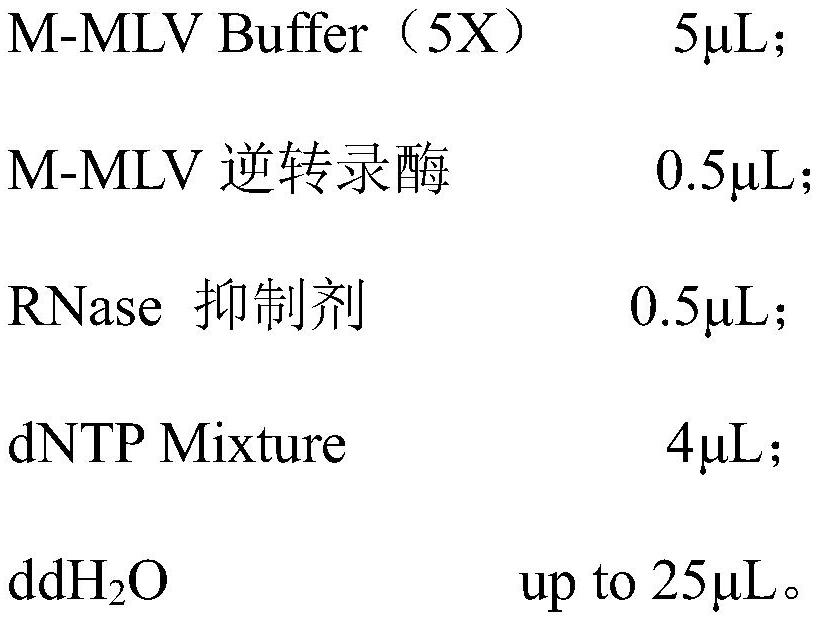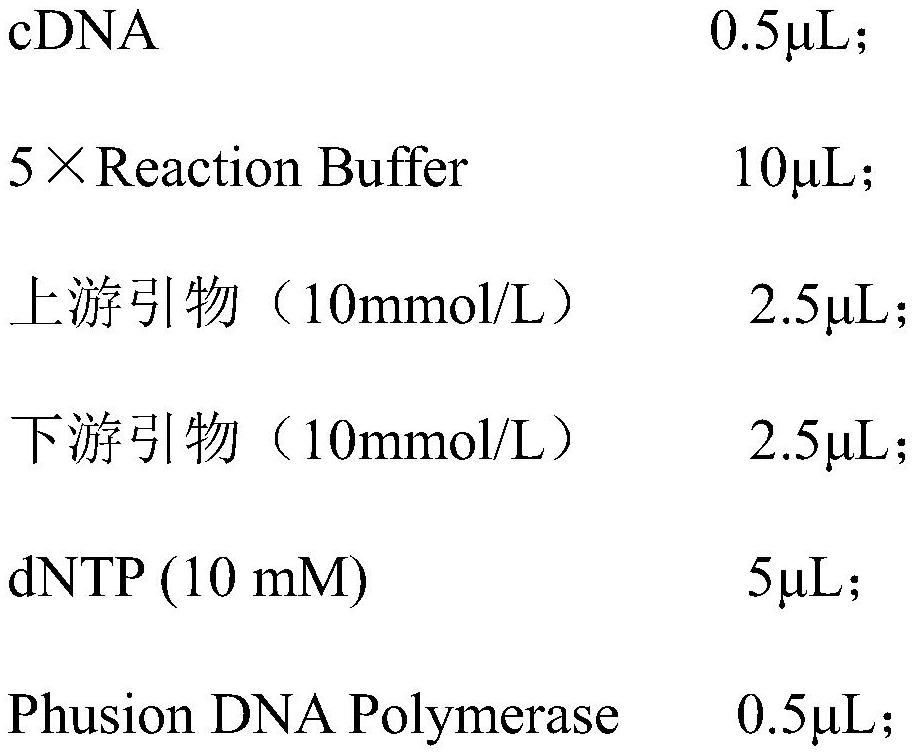Method for creating low-nicotine tobacco mutant by knocking out NtBBLs by using CRISPR/Cas9 and application of low-nicotine tobacco mutant
A mutant, tobacco technology, applied in the field of plant genetic engineering, can solve the problems of uncultivated utilization value, poor agronomic traits and the like
- Summary
- Abstract
- Description
- Claims
- Application Information
AI Technical Summary
Problems solved by technology
Method used
Image
Examples
Embodiment 1
[0032] Embodiment 1 Obtaining of NtBBLs gene
[0033] Using the cultivar Tobacco Safflower Dajin Yuangen as the experimental material, the total RNA of tobacco roots was extracted with an RNA extraction kit, and reverse-transcribed into cDNA for future use:
[0034] Tobacco total RNA was extracted according to the instructions of the plant RNA extraction kit.
[0035] 1 μg of total RNA was extracted from leaves for reverse transcription, and the transcription system was as follows:
[0036] Total RNA 1μg;
[0037] Oligo(dT) (10μM) 1.5μL;
[0038] wxya 2 O up to 15 μL;
[0039] Mix the above system and place it in PCR, keep it warm at 70°C for 5 minutes, put it on ice for 5 minutes immediately after removing it, and then add the following reagents to the system:
[0040]
[0041] The above system was placed in a PCR instrument, kept at 42°C for 65 minutes, 65°C for 10 minutes, kept at 4°C, and then stored in a -20°C refrigerator for use.
[0042] Design NtBBLs gene-spe...
Embodiment 2
[0051] Example 2 Construction of CRISPR / Cas9 gene editing vector
[0052] Using the gene NtBBLs related to nicotine metabolism obtained in Example 1, the present invention further constructed a CRISPR / Cas9 vector.
[0053]Select the NtBBLs gene-specific 23nt nucleotide sequence (SEQ ID No.5) as the guide sequence of CRISPR / Cas9, and connect, transform and PCR-amplify the sequence fragment with the CRISPR / Cas9 vector (provided by Southwest University) , PCR-positive clones were sent to the sequencing company for sequencing confirmation, and finally the CRISPR / Cas9-NtBBLs editing vector was obtained. details as follows:
[0054] (1) Design and synthesis of the sgRNA sequence of the NtBBLs gene:
[0055] Use the online software CRISPR-P 2.0 (http: / / cbi.hzau.edu.cn / crispr / ) to design sgRNA guide sequences, and select guide sequences with higher scores and located at appropriate positions in the NtBBLs gene sequence. The sgRNA sequence selected in this application is: TATGAAATCA...
Embodiment 3
[0079] Example 3 Transformation of Agrobacterium
[0080] Using the CRISPR / Cas9-NtBBLs editing vector plasmid constructed in the previous step, taking Honghua Dajinyuan as an example, carry out genetic transformation and tissue culture, and obtain plants in which the gene NtBBLs related to tobacco nicotine metabolism has been knocked out and edited, and related experimental procedures A brief introduction is as follows.
[0081] Sterilize the surface of tobacco seeds and plant them on MS medium. After they grow to 4 cotyledons (15-20 days), transfer them into culture bottles containing MS solid medium, and place them at 25±1°C under light intensity of 30-50 μmol / ( m2·s), and the light time is 16h / d to continue culturing for 35-40d, and set aside.
[0082] Transform the plasmid with the correct sequence into Agrobacterium, the specific steps are as follows:
[0083] (1) Take out the Agrobacterium competent cells stored at -80°C and freeze-thaw them on ice.
[0084] (2) When ...
PUM
 Login to View More
Login to View More Abstract
Description
Claims
Application Information
 Login to View More
Login to View More - R&D
- Intellectual Property
- Life Sciences
- Materials
- Tech Scout
- Unparalleled Data Quality
- Higher Quality Content
- 60% Fewer Hallucinations
Browse by: Latest US Patents, China's latest patents, Technical Efficacy Thesaurus, Application Domain, Technology Topic, Popular Technical Reports.
© 2025 PatSnap. All rights reserved.Legal|Privacy policy|Modern Slavery Act Transparency Statement|Sitemap|About US| Contact US: help@patsnap.com



